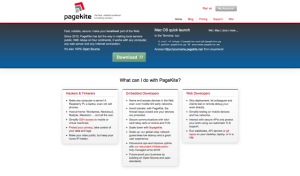Theme: STEM/STEAM at School
Back to Top
|
 |
|
The Coding Train
|
Science |
|
November 8, 2020 is National STEM/STEAM Day, and what better way to celebrate than to go "full STEAM" ahead aboard The Coding Train. This YouTube channel, hosted by Daniel Shiffman, introduces viewers to coding programs and fundamentals. The videos (which vary greatly in length) are informative, easy-to-follow, and fun, providing a perfect way to get students excited about the world of STEM. Plus, the multimedia format makes for a seamless implementation into remote learning. Teachers may want to use one of the beginner level playlists as the foundation for a week-long coding unit. Check out "Learning Processing: A Beginner's Guide to Programming Images, Animation, and Interaction," seven videos on the "core principles of computer programming," as a possibility. Shiffman also occasionally welcomes "guest conductors" aboard the train to share their expertise (with an emphasis on amplifying underrepresented voices in the tech field). The channel has gained more than one million followers since its launch in 2006, which further illustrates its magnetic impact on the STEM community. [EMB] |
|





|
|
 |
|
We Rep STEM
|
Science |
|
"Science is for everyone." This is the guiding principle of We Rep STEM, a platform "celebrat[ing] STEM minorities, [including] people of colour, professionals with disabilities, members of the LGBTQ community, Indigenous researchers, women of all races, [and] scientists in niche areas of expertise." The site is a useful resource for teachers, as it offers information on inclusivity in STEM fields, highlights upcoming events and programs, profiles diverse STEM superstars, and discusses relevant health topics such as youth wellbeing. Scrolling down the home page, readers will find stories grouped in various categories, such as Most Read, Latest, and At Work. The Glossary tab at the top of the page may also be worth scrolling through, as it defines several words and acronyms frequently referenced on the site (for example, "code-switching" and "SciComm"). Readers can also find the platform on Instagram (@werepstem), Twitter (@WeRepSTEM), and YouTube (We Rep STEM). [EMB] |
|





|
|
 |
|
 |
|
 |
|
Teacher Advisor
|
Mathematics |
|
Teacher Advisor uses its artificial intelligence technology to connect educators with curated content from open access platforms such as EngageNY, CPALMS (Florida), and North Carolina Department of Instruction, among others. The award-winning platform is designed for K-8 math teachers. Each grade level has its own page, which is located under the Grades tab at the top of the site. Visitors can browse by category (standards, lessons, activities, and strategies) or use the query bar to search for a specific topic. While a plethora of materials are available, the platform's advanced technology helps tailor results to each user's needs. For example, a search for "fractions" reveals more than 40 lesson plans. But, the Watson AI technology, "trained by math experts to understand elementary math concepts and certain modes of engagement within the elementary classroom," flags the top recommendations. Teacher Advisor is supported by IBM philanthropic resources and the Ford, Carnegie, and Stavros Niarchos foundations. While it is currently only available to users in the United States, the platform is looking to expand internationally soon. [EMB] |
|





|
|



















